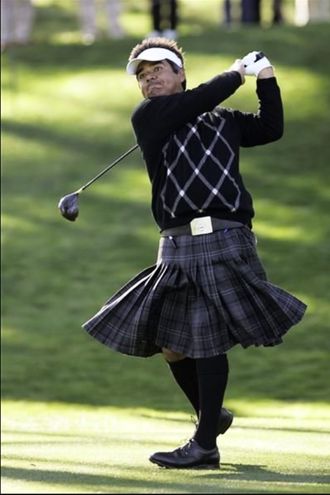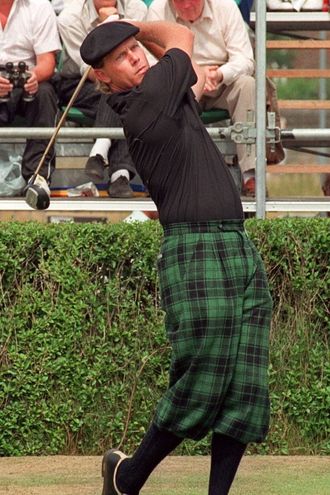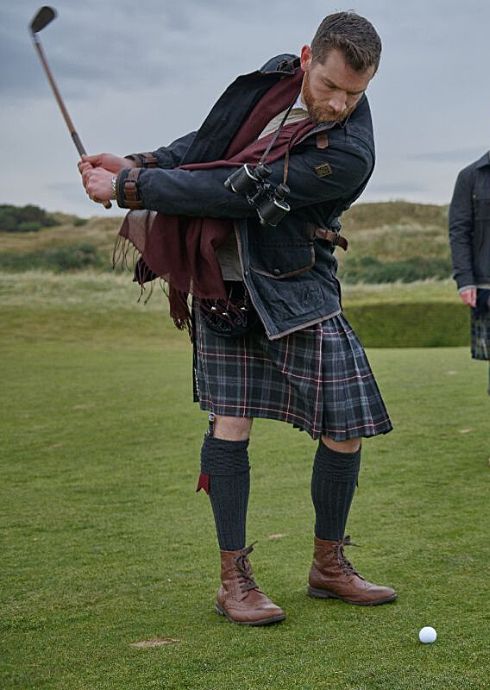From the Highlands to the Fairways | Scotland's Enduring Legacy in Golf
Golf, originating in 15th-century Scotland, is a widely popular sport with standardized rules and equipment developed in the 19th century. It gained global popularity, with Scotland remaining its spiritual home and boasting prestigious courses like St. Andrews. Golf is an essential part of sports and culture, with legendary players like Jack Nicklaus, Tiger Woods, and Phil Mickelson competing on Scottish courses. Today, it’s enjoyed by millions worldwide and continues to flourish.
Scotland: The Home of Golf
Scotland is widely acknowledged as the birthplace of golf and boasts a rich history with the sport. Despite its significant evolution, Scotland remains a pivotal center for golf, hosting many renowned courses and tournaments annually. St. Andrews, the sport’s birthplace, is one of the world’s oldest and most esteemed courses,
with other notable Scottish courses such as Royal Troon, Carnoustie, and Muirfield hosting significant championships over the years. Scotland’s contribution to the sport’s development is widely recognized and celebrated, making it a vital hub for the sport and a must-visit destination for avid golfers.
Origin & History of Game
The origins of golf in Scotland can be traced back to the 15th century when the game was played on sandy areas known as linksland, located near the coast and unsuitable for farming. The earliest forms of the game involved striking a pebble or wooden ball with a stick, with the objective of getting it into a hole in the ground. Golf was played using a variety of clubs, with the introduction of the featherie – a ball made from leather and stuffed with feathers – occurring in the 17th century.
Over time, the sport evolved, with standardized rules and equipment being developed in the 19th century, leading to a more organized and accessible game. Scotland played a pivotal role in golf’s early development, and to this day, it remains the sport’s spiritual home. Scotland’s rich history in golf is celebrated globally, with courses such as St. Andrews, Royal Troon, and Carnoustie being recognized as iconic landmarks in the game’s history.
From Simple Pastime to Global Phenomenon
As golf’s popularity grew in the 15th century, so did the need for more sophisticated equipment. The golf ball and club were developed, and new rules were introduced to standardize the game. The first official golf tournament was held in Edinburgh, Scotland, in 1744, which marked a significant milestone in the sport’s history. Following the tournament, golf clubs and tournaments continued to grow in popularity throughout Scotland.
The evolution of golf’s standardized equipment and rules made the game more accessible to people of all ages and backgrounds. Today, golf is enjoyed by millions worldwide and is played on courses established in countries worldwide. Scotland remains an important destination for golf enthusiasts, with many famous courses and tournaments taking place in the country each year.
The Global Appeal of Golf
Golf, originally popular in Scotland, has become a sport enjoyed worldwide with courses established in every corner of the globe. The game’s spread began with the establishment of the first golf club outside of Scotland in England in 1864, followed by its rapid growth in popularity in other countries such as the United States, Canada, and Australia. Despite this global expansion, Scotland remains a crucial focal point of golf, given its history and numerous famous courses.
St. Andrews, considered the spiritual home of golf, and its Old Course are globally renowned. Scotland continues to host significant golf tournaments, including the Open Championship, attracting players and fans worldwide. The sport’s global appeal has led to the development of new courses and an increase in the number of players, making it one of the most popular sports globally, enjoyed by people of all ages and backgrounds.
From Rugged Pasture Courses to High-Tech Greens
During the turn of the 19th century, golf had yet to evolve into the game we know today, with heavily manicured greens, high-tech equipment, and motorized golf carts being a distant reality. This old-fashioned game, referred to as “pasture golf” or “links golf,” was far more rugged and unique in comparison to modern golf courses. Traditional Scottish golf courses could range from 5 to 25 holes, with the natural lay of the land dictating the number and arrangement of these holes. This unique style of golfing gave rise to the name “links course.” These
courses are composed of sand greens and sand tees, which are created by oiling and raking a special blend of sand until it is smooth and lightly packed. Hickory shaft clubs were used in the old game, which were more difficult to control, and the balls of the game also traveled only about half as far on a stroke as a modern ball. As a result, a links course is more compact and intimate, providing a different experience for golfers. Our Casual Kilt is our most popular Golf Kilt, and traditional Links Golf is now being offered at several resorts in Scotland and some adventurous spots in the USA. Some players even choose to adopt vintage clothing, including kilts, to more fully immerse themselves in this time-travel sporting experience. So, if you’re intrigued by this idea, why not try kilt up for golf and experience this unique and authentic style of the game?
Golfing in a Kilt!
Wearing a kilt while playing golf can be a unique and memorable experience. When it comes to golf, kilts are not only a nod to tradition but can also be practical, comfortable and add an extra layer of fun to the game.
So, the answer of the query implies: Why do we Need a Kilt for Golfing?
Whether you play golf on a professional course or in your backyard, a kilt is an excellent addition to your golfing kit. Not only is it a traditional garment, but it also allows for complete freedom of movement as you swing, making it the perfect choice for golfers. In addition to its practical benefits, a kilt also offers ventilation, which is a clear advantage on warm days. Our preferred kilt for golfing is the Casual Kilt, and that is because it is really comfortable to wear and easily manageable while participating in a game like golf. which is made on cotton fabric and can be paired with any Day Sporran of your choice. You can take off the Kilt Sporran or spin it to the side before you swing, ensuring it won’t interfere with your movements.
To dress up your outfit, add Tartan Plaid Ties, or hose or flashes, or keep it simple and wear your favorite performance polo. You can even do twinnings with your golf buddies and enjoy the process of this game together. like the way you can make a kilt of same Tartan Pattern in order to twin with your golf buddy.
And what could make a kilted golf day even better? Enjoying a dram of whisky in the clubhouse after, of course. So, whether you’re a seasoned golfer or just starting, consider adding a kilt to your golfing attire for both practicality and style. Wearing a kilt on the golf course is not only a great way to celebrate Scottish heritage but can also add a touch of individuality to one’s golfing experience. Whether you’re a seasoned golfer or a beginner, wearing a kilt while playing golf can make for a memorable and enjoyable round.
How Golf Evolved into a Global Phenomenon
Golf has evolved into a game enjoyed by millions worldwide, with professional tours and tournaments attracting significant crowds and television audiences. Today, many people take up golf as a hobby, attracted by the physical exercise and mental challenge of the game, as well as the social aspects of playing with others. For many enthusiasts, golf provides a unique combination of physical exercise and mental stimulation,
challenging players to think strategically about each shot while also benefiting from outdoor exercise. Additionally, the social aspects of golf, such as playing in groups or participating in tournaments, can foster a sense of community and provide opportunities for networking and socializing. Professional golf tours and tournaments have also helped increase the popularity of the sport, with top players becoming household names and attracting global interest. The professional game has been responsible for advancements in golf technology and techniques, resulting in an increasingly competitive sport. Overall, the global appeal of golf continues to grow, with millions of people worldwide enjoying the game for its physical and mental challenges, social aspects, and competitive opportunities.
“People Also Ask!”
What do Scottish people call golf?
The Scots invented golf and they call it “golf” or “gowf” in their traditional dialect. The word “golf” is believed to have originated from the Scottish word “goulf” meaning “to strike” or “hit”.
What is the best month to play golf in Scotland?
The best time to play golf in Scotland is from May to September when the weather is mild and the days are long. The peak season for golf in Scotland is from June to August when the courses are busy and the green fees are higher.
What is a birdie & choker in golf?
A birdie in golf refers to a score of one stroke under par for a given hole. For example, if a golfer scores a 3 on a par-4 hole, they have made a birdie. A choker is a term used to describe a golfer who fails to perform under pressure and makes mistakes that cost them the game.
Who are some famous Scottish golfers?
Scotland has produced many legendary golfers, including Old Tom Morris, Willie Park Sr., and James Braid. Some of the most famous contemporary Scottish golfers include Colin Montgomerie, Paul Lawrie, and Catriona Matthew.
How much does it cost to play golf in Scotland?
The cost of playing golf in Scotland varies depending on the course, the time of year, and the time of day. Green fees can range from £20 to £250 or more for the most prestigious courses. However, many courses offer discounted rates for twilight play or for golfers who book in advance.






















